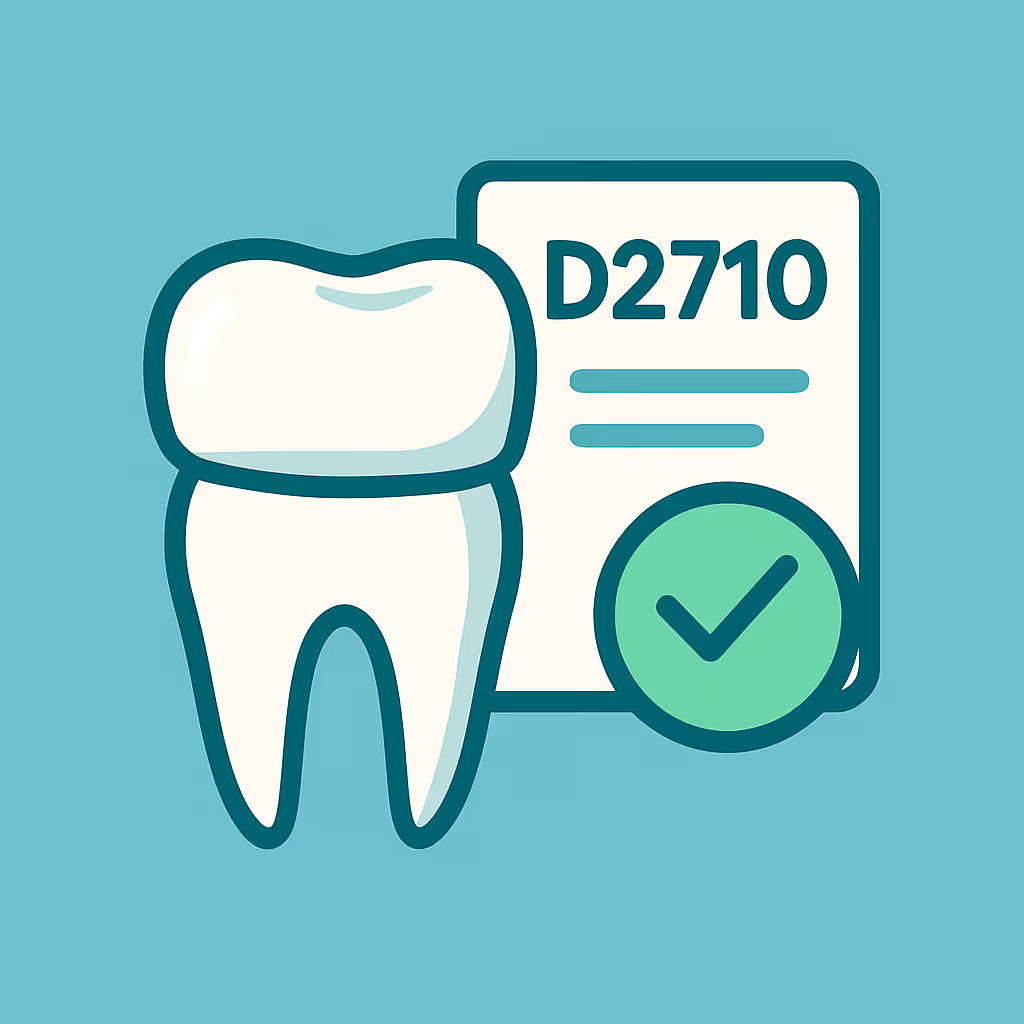Understanding Dental Code D6087
When to Use D6087 dental code
The D6087 dental code is designated for an implant supported crown that requires an abutment supported retainer for a fixed partial denture. This code should be used when a dental implant is placed and the final restoration is a crown that is supported by an abutment, not directly by the implant itself. It is important to distinguish D6087 from other implant crown codes, such as D6065 (implant supported porcelain/ceramic crown) or D6068 (abutment supported metal crown), as each code represents a different clinical scenario and prosthetic design. Using the correct code ensures accurate billing and minimizes claim denials.
Documentation and Clinical Scenarios
Proper documentation is critical when submitting claims for D6087. Clinical notes should clearly indicate:
- The presence of a dental implant and an abutment.
- The type of prosthesis being delivered (i.e., a crown as part of a fixed partial denture/bridge).
- Radiographic evidence showing the implant and abutment in place.
- Details of the materials used and the clinical rationale for choosing an abutment-supported crown.
Common clinical scenarios include cases where a patient is missing multiple teeth and a fixed partial denture (bridge) is supported by implants and abutments. In these cases, D6087 is used for the retainer crown portion that sits atop the abutment, not for the pontic or the implant body itself.
Insurance Billing Tips
To maximize reimbursement and reduce delays, follow these best practices when billing D6087:
- Verify coverage: Before treatment, confirm the patient’s implant and prosthetic benefits, including frequency limitations and waiting periods.
- Pre-authorization: Submit a pre-treatment estimate with supporting documentation to avoid surprises for both the practice and the patient.
- Accurate coding: Ensure D6087 is used only for abutment-supported retainer crowns as part of a fixed partial denture. Use other codes, such as implant supported porcelain/ceramic crown, when appropriate.
- Attach documentation: Always include clinical notes, radiographs, and a detailed narrative explaining the necessity of the abutment-supported crown.
- Review EOBs: Carefully check Explanation of Benefits (EOBs) for payment accuracy and be prepared to submit appeals with additional documentation if claims are denied.
Example Case for D6087
A 58-year-old patient presents with two missing lower molars. After implant placement and healing, the dentist fabricates a fixed partial denture (bridge) supported by two implants. Each implant receives an abutment, and the bridge includes two retainer crowns (one on each abutment) and a pontic. For the retainer crowns, the practice bills D6087, providing radiographs and a narrative describing the clinical scenario. The insurance company reviews the claim, sees the clear documentation, and approves payment for both D6087 crowns as part of the fixed partial denture.
By understanding when and how to use the D6087 dental code, dental teams can ensure accurate billing, minimize claim denials, and support optimal patient care.





